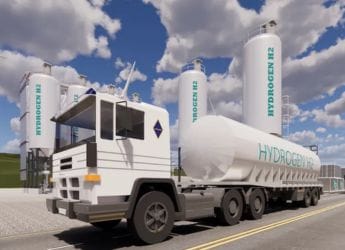- Home
- Science
- Science News
- Asteroid Bennu’s Surface Like a Pit of Plastic Balls, NASA’s Spacecraft Almost Sank Into It, Say Scientists
Asteroid Bennu’s Surface Like a Pit of Plastic Balls, NASA’s Spacecraft Almost Sank Into It, Say Scientists
NASA's OSIRIS-REx collected samples from the asteroid in October 2020 and sent back close-up and detailed pictures of Bennu's surface to Earth.

Photo Credit: NASA/Goddard/University of Arizona/Lockheed Martin
Asteroid Bennu's surface consists of loosely packed particles
While scientists believed that asteroid Bennu had a smooth and plain surface, they were recently astonished to learn the true nature of its exterior. An analysis of the data gathered by NASA's OSIRIS-REx spacecraft revealed that Bennu's surface consists of loosely packed particles that resemble a pit filled with plastic balls.
The latest revelation was made after OSIRIS-REx collected samples from the asteroid in October 2020 and sent back close-up and detailed pictures of Bennu's surface to Earth. “What we saw was a huge wall of debris radiating out from the sample site. We were like, ‘Holy cow!'” said Dante Lauretta, principal investigator of OSIRIS-REx, based at the University of Arizona.
Scientists observed the surface covered with numerous pebbles while the spacecraft also witnessed an unusually gentle landing. A large crater measuring 8 metres wide was also noticed that had been formed due to the touchdown of the spacecraft. “Every time we tested the sample pickup procedure in the lab, we barely made a divot,” said Lauretta.
Puzzled by the strange property of Bennu's surface, the mission decided to send the spacecraft back to take more photos. Scientists looked at the volume of debris in before and after pictures while they also analysed the acceleration data during the spacecraft's landing. It was learned that OSIRIS-REx experienced very little resistance when it made the touch down. Ron Ballouz, an OSIRIS-REx scientist, shared that “by the time we fired our thrusters to leave the surface we were still plunging into the asteroid.”
The team of scientists carried out hundreds of simulations and used the acceleration data and images to interpret the density and cohesion of the asteroid. The findings were published in two papers in Science and Science Advances which were led by Dante Lauretta and member of the OSIRIS-REx science team Kevin Walsh, respectively.
The asteroid had surprised earlier too when OSIRIS-REx observed its surface to be filled with boulders rather than a sandy and smooth surface they had expected.
Get your daily dose of tech news, reviews, and insights, in under 80 characters on Gadgets 360 Turbo. Connect with fellow tech lovers on our Forum. Follow us on X, Facebook, WhatsApp, Threads and Google News for instant updates. Catch all the action on our YouTube channel.
Related Stories
- Samsung Galaxy Unpacked 2025
- ChatGPT
- Redmi Note 14 Pro+
- iPhone 16
- Apple Vision Pro
- Oneplus 12
- OnePlus Nord CE 3 Lite 5G
- iPhone 13
- Xiaomi 14 Pro
- Oppo Find N3
- Tecno Spark Go (2023)
- Realme V30
- Best Phones Under 25000
- Samsung Galaxy S24 Series
- Cryptocurrency
- iQoo 12
- Samsung Galaxy S24 Ultra
- Giottus
- Samsung Galaxy Z Flip 5
- Apple 'Scary Fast'
- Housefull 5
- GoPro Hero 12 Black Review
- Invincible Season 2
- JioGlass
- HD Ready TV
- Laptop Under 50000
- Smartwatch Under 10000
- Latest Mobile Phones
- Compare Phones
- Honor Win RT
- Honor Win
- Xiaomi 17 Ultra Leica Edition
- Xiaomi 17 Ultra
- Huawei Nova 15
- Huawei Nova 15 Pro
- Huawei Nova 15 Ultra
- OnePlus 15R
- Asus ProArt P16
- MacBook Pro 14-inch (M5, 2025)
- OPPO Pad Air 5
- Huawei MatePad 11.5 (2026)
- Xiaomi Watch 5
- Huawei Watch 10th Anniversary Edition
- Acerpure Nitro Z Series 100-inch QLED TV
- Samsung 43 Inch LED Ultra HD (4K) Smart TV (UA43UE81AFULXL)
- Asus ROG Ally
- Nintendo Switch Lite
- Haier 1.6 Ton 5 Star Inverter Split AC (HSU19G-MZAID5BN-INV)
- Haier 1.6 Ton 5 Star Inverter Split AC (HSU19G-MZAIM5BN-INV)

















